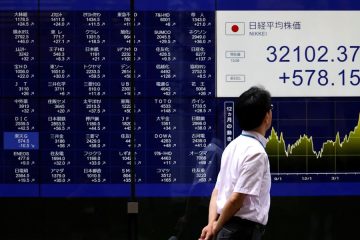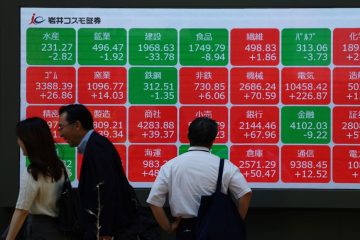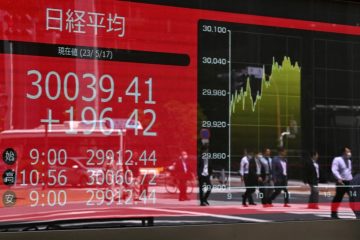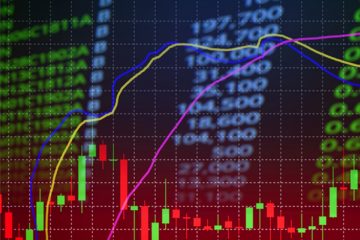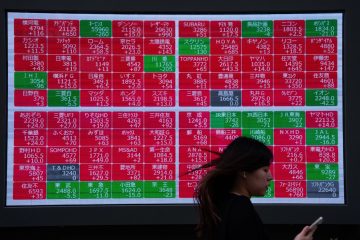Xi Jinping’s price-war campaign energizes China’s stock market

Analysts at JPMorgan Chase & Co. and Goldman Sachs Group Inc., along with money managers in Hong Kong and Singapore, are now focusing on an opaque term that has become the key to understanding Chinese policy intentions and navigating the stock market. The term “anti-involution” has appeared in government documents over the past year, but gained prominence earlier this month when President Xi Jinping chaired a high-level meeting that pledged to regulate “disorderly” price competition. It pertains to initiatives aimed at addressing China’s industrial challenges, characterized by fierce price competition and overcapacity that have negatively impacted profitability across various sectors, including solar, new energy vehicles, and steel.
Investors remain optimistic about a forthcoming coordinated policy response to address the causes of deflation, although Beijing has yet to unveil any specific plan. Analyst reports on the theme have surged, as solar and steel stocks experienced a rally in July. Morgan Stanley strategists shifted their preference to onshore shares, moving away from those in Hong Kong last week.
“One of the biggest issues that investors have investing in China is that of excessive competition,” said Min Lan Tan, head of the Asia Pacific chief investment office at UBS AG. “It’s actually a very positive development that top down the government is now recognizing it and directly saying that destructive competition has to stop.” “It’s a powerful policy signal.
”The Chinese term for involution, 内卷 (neijuan), translates literally to “rolling inwards.” It describes a system of intense competition that results in minimal meaningful progress.
Significant investment in capacity building has enabled Chinese companies to improve their position on the global stage. The nation’s companies now lead every aspect of the solar supply chain, and its EV makers have surpassed Tesla’s dominance. Ending destructive competition has rarely been more important. Producer deflation is worsening, and trade tensions indicate that China can no longer export some of its overcapacity to other countries. “With foreign markets closing off Chinese trade routes, part of the competition is forced to return to the domestic market,” said Jasmine Duan, senior investment strategist at RBC Wealth Management Asia.
The campaign appears to be enhancing investor sentiment for the mainland market, where policy drivers hold greater influence and industrial stocks carry more weight. The onshore CSI 300 Index has increased by 2% in July, surpassing the Hang Seng China Enterprises Index after trailing it for much of the year.
Solar stocks Xinjiang Daqo New Energy Co. and Tongwei Co. have risen by at least 19% this month. Liuzhou Iron & Steel Co Ltd. has surged over 50%, while Angang Steel Co. has seen an increase of approximately 16%. Shares of glass, cement, and chemicals have surged. While still in early stages, Wendy Liu, head of China and Hong Kong equity strategist at JPMorgan, noted that if the reforms pan out, “there’ll be consolidation in China and there’ll be slightly better pricing and margins, and there’ll be better valuation.” “Sectors that are likely to benefit include autos, battery, solar, cement, steel, aluminum and chemicals,” she said.
For experienced observers of China, the current rhetoric mirrors the supply-side reforms of 2015-2018, during which a government-led initiative to reduce outdated capacity in industries like coal and steel contributed to rising prices in subsequent years. This time, however, significant differences may hinder the campaign’s effectiveness. A decade ago, the oversupply was primarily focused in upstream and construction-related sectors. Today, it has become more pervasive, covering the most promising industries such as solar, EV, and battery, as well as downstream consumer sectors like healthcare and food.
The intensifying price war among technology giants listed in Hong Kong illustrates that point — China’s private sector leaders. Shares in Meituan, Alibaba Group Holding Ltd., and JD.com Inc. have fallen over 20% from their March peaks as they compete for delivery market growth. “This time the overcapacity is concentrated in industries mostly dominated by private firms, so the challenges are going to be greater than when SOEs ruled and could just buy up the private firms and shut them down,” said Li Shouqiang, a fund manager at Shenzhen JM Investment Management.
Addressing the supply-demand imbalance necessitates measures to reflate the economy through increased consumption — a significant challenge the government has faced. Currently, investors appear optimistic that a significant supply-side reform is forthcoming. Morgan Stanley strategists noted that sentiment has improved with the government’s message, stating they now favor A-shares over offshore ones. “When senior policymakers change some policy tone, there should be some actionable items or something to follow through,” said Louisa Fok, China equity strategist with Bank of Singapore. While it won’t be an overnight solution, she noted that it is “definitely positive” that the government recognizes the issues.



